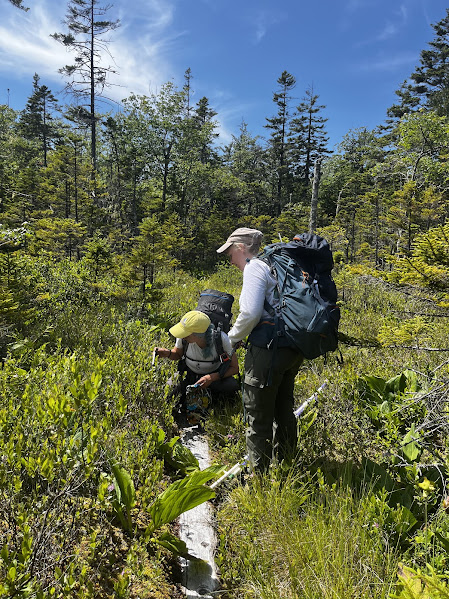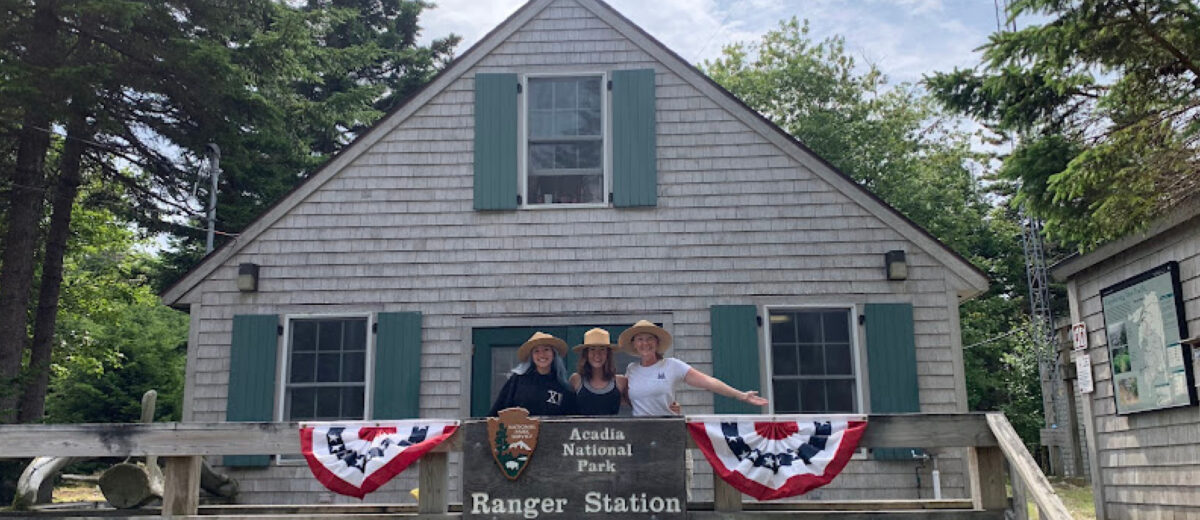by Lucy Enders
Isle au Haut is an island located six miles off the coast of Maine in Penobscot Bay. It is accessible by a 45-minute boat ride from Stonington, and a portion of the island is owned and managed by Acadia National Park.
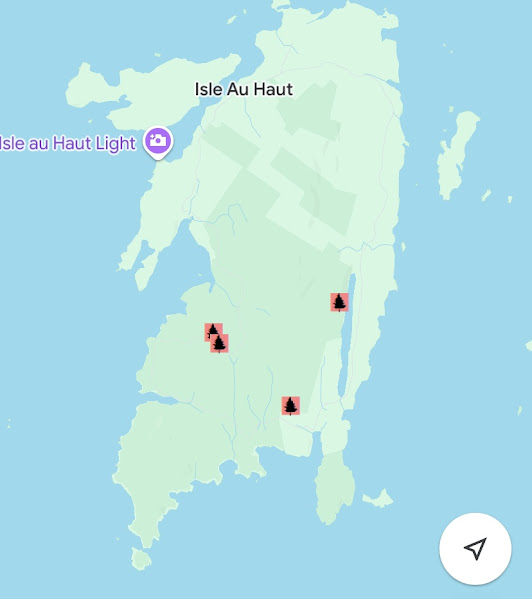
My trip to Isle au Haut was to complete forest health monitoring for the National Park Service Northeast Temperate Network (NETN). Our goal is to navigate to permanent plots and assess forest floor vegetation as well as tree growth and forest regeneration. Each plot is revisited every four years and the data serve to inform natural resource managers on the most up-to-date conditions of their forests, and is also used to track how forests are changing over time, an ever-increasingly important task as climate change progresses. Isle au Haut is a four-day stop in a 19-week field season, during which we sample in 16 national parks from Maine to Virginia. Although we are there for a short time, Isle au Haut is admittedly my favorite destination of all the parks we visit. I fell in love with the rugged environment and immersive experience of staying in the off-grid ranger cabin, reached by a quarter of a mile hike. I found the forests exceptionally beautiful and was delighted to spend those days out in the field enjoying them. This year we sampled four permanent forest plots on the island.
The first plot we visited, on Duck Harbor Mountain, is a scree slope filled with stunted red spruce and black huckleberry bushes. This plot was a favorite of the crew. Despite the treacherous terrain the views were outstanding and the twisty, stunted spruce trees made for fun and interesting sampling. It was at this plot we first encountered damage to the spruce trees from the invasive and parasitic plant dwarf mistletoe. Our database did show a record of this infestation during previous plot visits, and we did not detect any new mistletoe, only the remaining “witch’s brooms” that occur on the branches of an affected tree. The “witch’s brooms” are a cluster of abnormal growth on the tree’s branches caused by the dwarf mistletoe, and would be observed on nearly all of our plots. While the trees we observed were not killed by the mistletoe, repeated infection has the potential to cause mortality, so it is something we kept an eye out for while completing our monitoring.
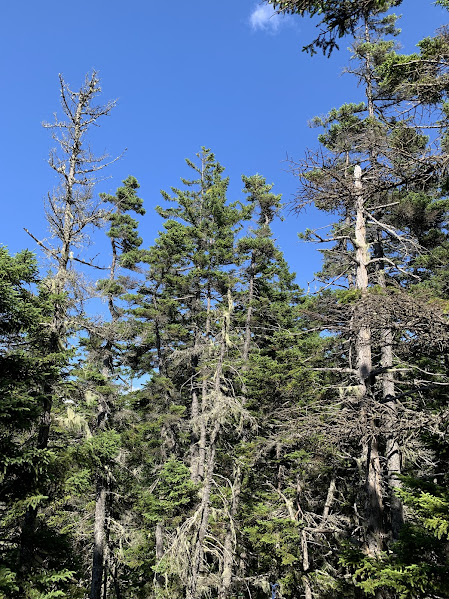
Another important metric we record at each plot is the level of deer browse impact. We assign a number from 1 to 5 depending on several different factors including amount of browse, and evidence of seedling suppression. In comparison to the oak-heath forests in parks of suburban Virginia, Acadia National Park in general has less deer browse pressure. This metric is essential to our purposes because overbrowsing by deer has detrimental impacts on forest regeneration, and ultimately can cause complete loss of forest habitat. A recent study analyzing NETN data found that 70 percent out of 39 parks from Maine to Virginia are in a state of imminent failure or probable failure for forest regeneration. Acadia National Park is in fact the only park included in the study whose forests are classified as secure. The plots we visited at Isle au Haut were either given a 2 (low deer impact) or 3 (moderate deer impact) rating for deer browse impacts: minimal browse was observed and forest regeneration was evidently not being suppressed by overbrowsing. Generally throughout our sampling we found no large concerns across our four plots; these forests are dense and rich and I really enjoyed getting to experience them at an in depth level.
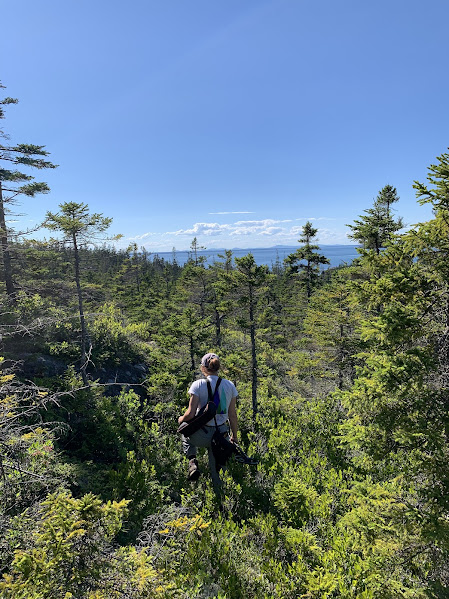
On our few days off, we swam in the ocean, hiked around the island, and met some of the island’s residents at their annual 4th of July parade and strawberry shortcake gala. I truly can’t say enough positive things about the island’s culture and beauty. I would recommend to anyone who hasn’t made the trip to Isle au Haut to go experience it for themselves, as I surely plan to return someday.
